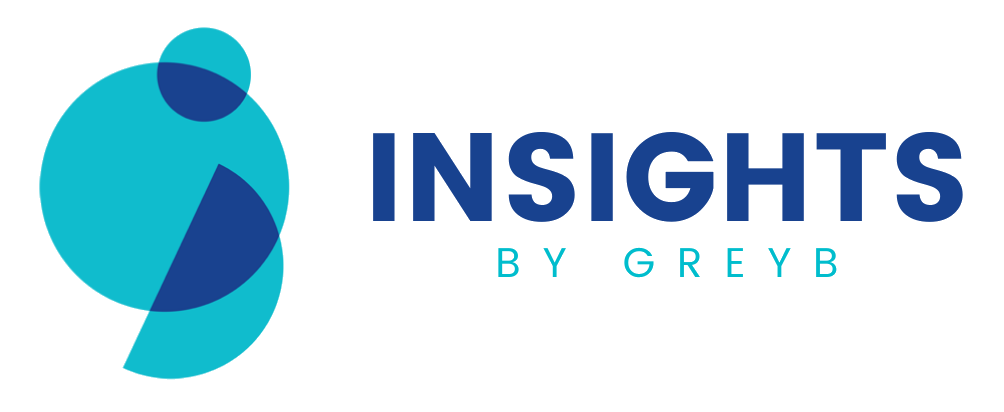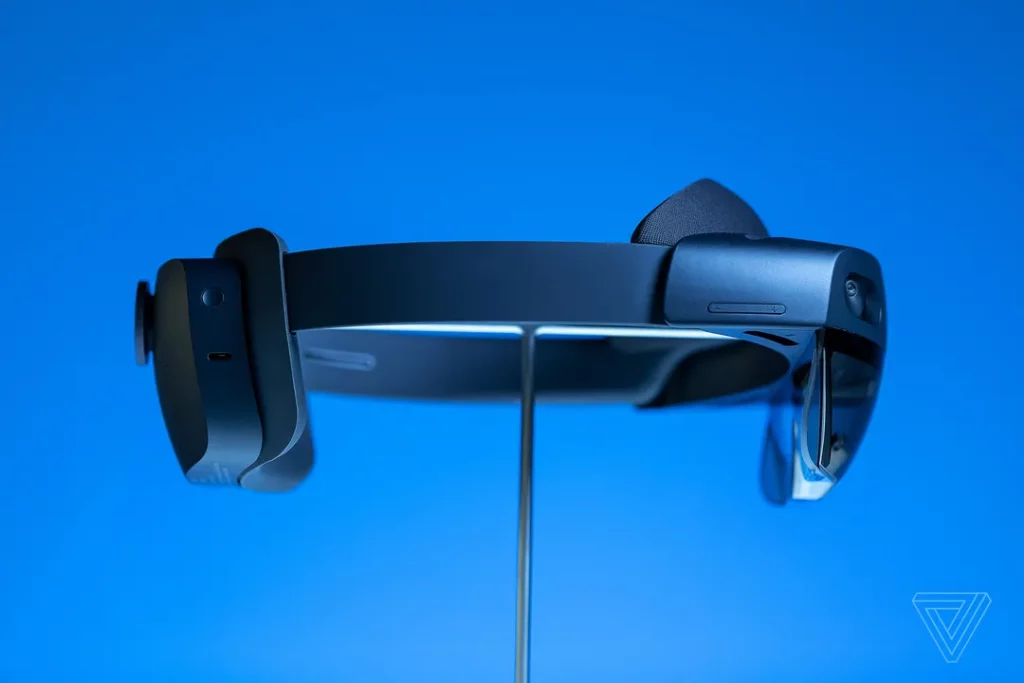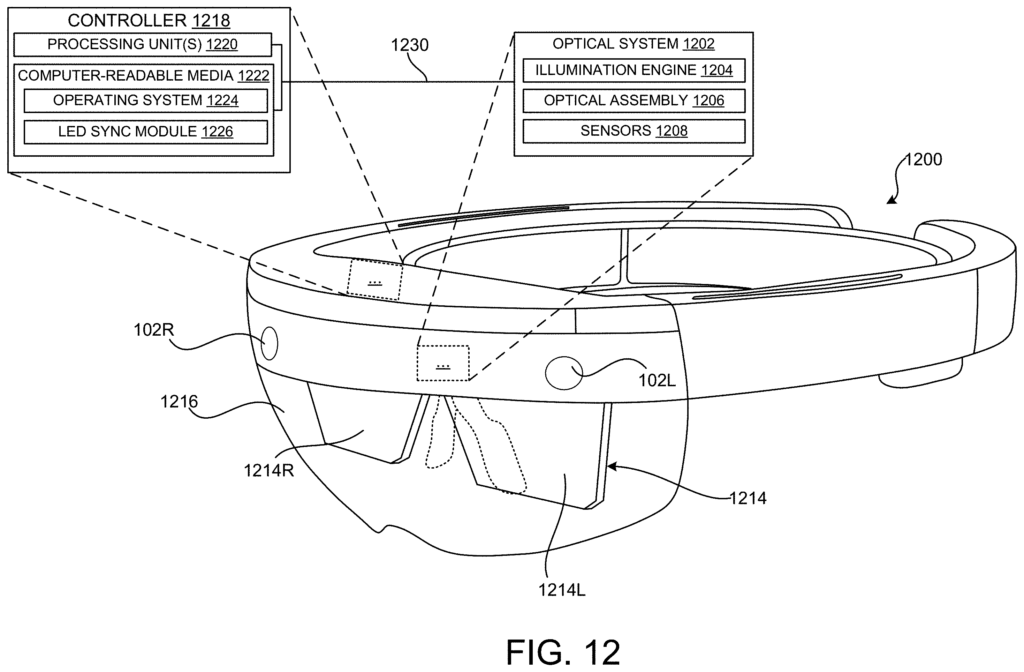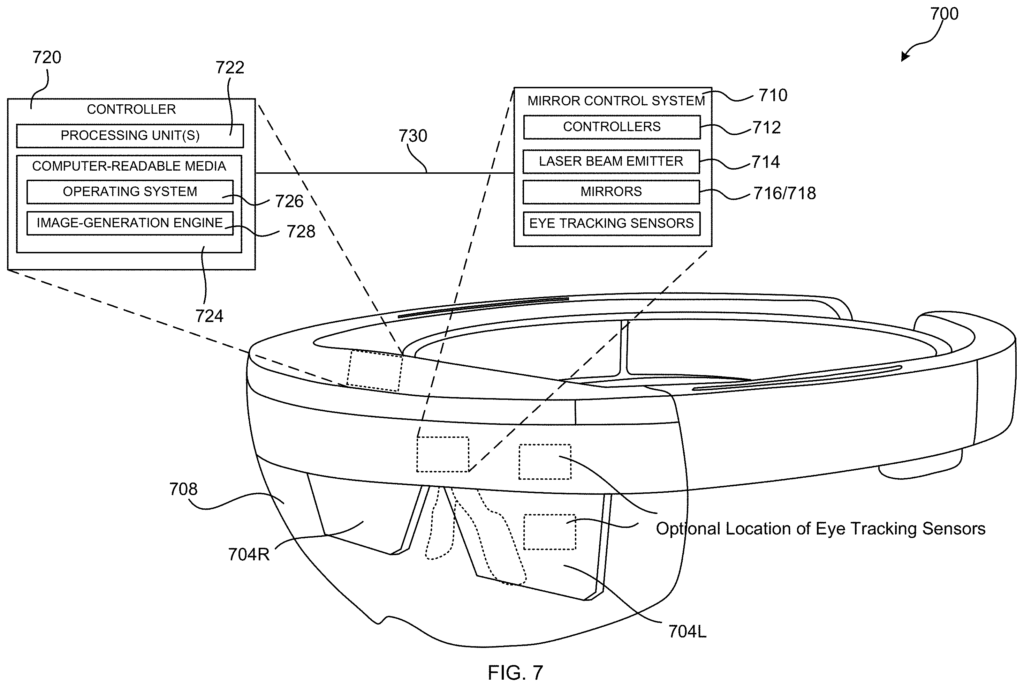Microsoft HoloLens is at the forefront of mixed reality technology, setting new standards in augmented and virtual reality. Recently, Microsoft enhanced HoloLens 2 with improved spatial mapping and gesture recognition, reinforcing its leadership in the AR industry. Featuring advanced optics, a Holographic Processing Unit (HPU), and seamless integration with Microsoft services like Azure, HoloLens provides a unique mixed reality experience.
This article explores the key patents behind HoloLens, highlighting the technology that drives its features such as gesture control, spatial sound, and real-time environment mapping. These innovations are transforming how we interact with digital content, making HoloLens a vital tool across various industries.
Image Source
Do read about some interesting highlights of Microsoft’s Holographic Keyboard and Microsoft patent portfolio.
How does Microsoft Hololens Function?
Mixed Reality Display:
- Uses see-through holographic lenses to overlay digital content onto the physical world.
- Creates 3D holograms that appear to interact with real-world objects.
Sensors and Environmental Mapping:
- Equipped with depth sensors, ambient light sensors, and an inertial measurement unit (IMU).
- Maps the surrounding environment in real-time, allowing for precise placement of holograms.
Holographic Processing Unit (HPU):
- Custom-built HPU processes data from sensors, ensuring smooth and real-time holographic experiences.
Gesture and Voice Recognition:
- Users interact with holograms using hand gestures and voice commands.
- Advanced gesture recognition technology interprets movements for intuitive control.
Spatial Sound:
- Provides spatial audio that makes holograms sound as real as they look.
- Enhances the immersive experience by matching sounds to the location of holograms.
Integration with Microsoft Services:
- Seamlessly integrates with Azure, OneDrive, and Dynamics 365.
- Allows for enhanced functionality and cloud-based applications.
Mixed Reality Display:
- Uses see-through holographic lenses to overlay digital content onto the physical world.
- Creates 3D holograms that appear to interact with real-world objects.
Sensors and Environmental Mapping:
- Equipped with depth sensors, ambient light sensors, and an inertial measurement unit (IMU).
- Maps the surrounding environment in real-time, allowing for precise placement of holograms.
Holographic Processing Unit (HPU):
- Custom-built HPU processes data from sensors, ensuring smooth and real-time holographic experiences.
Gesture and Voice Recognition:
- Users interact with holograms using hand gestures and voice commands.
- Advanced gesture recognition technology interprets movements for intuitive control.
Spatial Sound:
- Provides spatial audio that makes holograms sound as real as they look.
- Enhances the immersive experience by matching sounds to the location of holograms.
Integration with Microsoft Services:
- Seamlessly integrates with Azure, OneDrive, and Dynamics 365.
- Allows for enhanced functionality and cloud-based applications.
Real-Time Data Processing:
- Continuously processes large amounts of data from the environment and user interactions.
- Ensures dynamic and adaptive responses to changes in the environment.
Innovation behind the Microsoft Hololens
We’ve analyzed key patents related to Microsoft Hololens. Read the summary below and discover the ingenious innovations behind this breakthrough technology!
The patent US20230350628A1 describes a method for improving collaboration in augmented reality (AR) environments. It allows users wearing head-mounted displays (HMDs) to intuitively see what their fellow collaborators are viewing or doing without obstructing their own view.
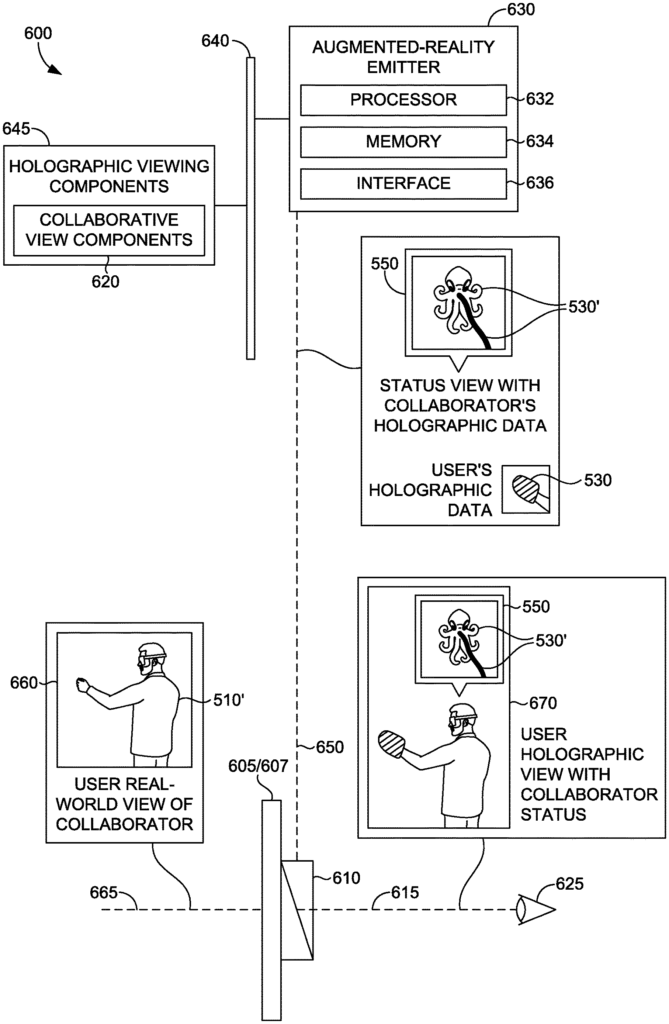
When two HMDs interact, one can request visual data from the other, which is then processed and sent back to be displayed alongside the first user’s augmented reality view. This way, users can see additional computer-generated objects indicating the position or status of others, enhancing their collaborative experience.
The main problem this patent solves is the difficulty of sharing and perceiving each other’s contributions and perspectives in a collaborative AR setting, making teamwork more seamless and efficient.
The patent US20230161374A1 describes a system for synchronizing the timing between an image capture device and a light emission device in virtual and augmented reality headsets. The technology ensures that the LEDs used for tracking movements are turned on precisely when the camera is ready to capture images, reducing power consumption and improving image quality. This synchronization is crucial for accurate tracking of head movements and controllers, enhancing the user experience in VR and AR environments.
By using a master clock signal divided into high-frequency signals and estimating the camera’s exposure start time, the LEDs can be activated just in time for image capture.
This method solves the problem of poor image quality and high power usage due to inaccurate LED and camera synchronization.
Also patent US11537201B1 describes a technology for eye tracking in head-mounted display (HMD) devices, such as those used in virtual reality (VR) and augmented reality (AR). The system addresses the issue of light reflections from a user’s eye, which can be either specular (intense and potentially saturating the electronics) or scattered.
To prevent the electronics from being overwhelmed by the intense light, the system selectively filters out the saturated signals, using only the remaining scattered light. These filtered signals are combined into a clear digital image of the eye, free from interference by ambient light or intense reflections. This clear image can then be used for eye movement tracking, user identification, and other purposes, improving the accuracy and functionality of eye tracking in HMD devices.
This technology solves the problem of obtaining precise eye tracking data without the interference of intense light reflections that can distort the image and overwhelm the electronics.
At last the patent US20190067975A1 describes a system for managing the discharge of a battery in mobile devices based on its temperature to prevent overheating.A controller monitors the battery temperature and sets a limit on the discharge current. If the current exceeds this limit, the controller temporarily increases the limit but shuts down the device if the battery temperature becomes too high.
This method helps maintain device operation while preventing damage from overheating. The main problem it solves is ensuring mobile devices remain operational without overheating, thus avoiding potential safety hazards and maintaining battery health.
In the competitive landscape of augmented and virtual reality, several companies like Meta (Oculus), Magic Leap, and Google (Google Glass) are developing similar products. However, Microsoft HoloLens stands out with its advanced Holographic Processing Unit (HPU), seamless integration with Microsoft services, and superior environmental mapping and gesture recognition capabilities.
These features not only enhance user experience but also provide robust solutions for various industries such as healthcare, engineering, and education. The transformative potential of Microsoft HoloLens lies in its ability to merge the digital and physical worlds seamlessly, fostering new ways of collaboration, learning, and productivity. As mixed reality technology continues to evolve, HoloLens is poised to lead the way in redefining how we interact with our surroundings and digital content.
Need to know anything else? We got you covered!
